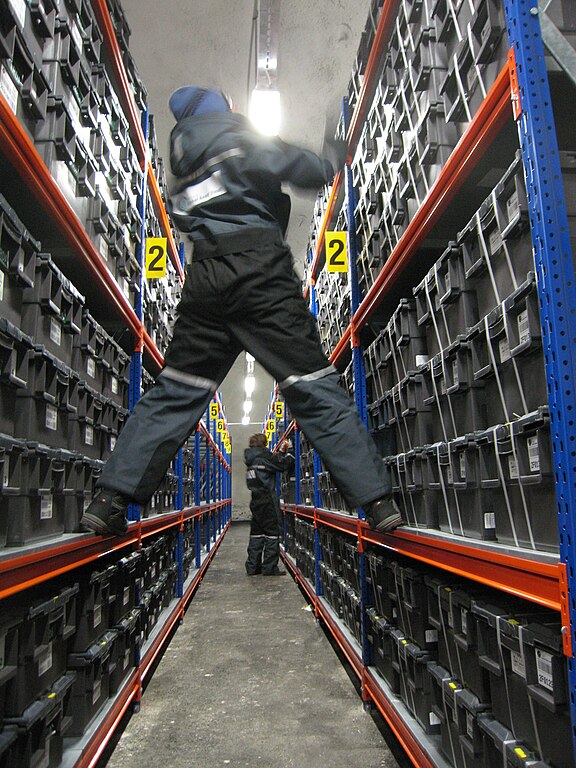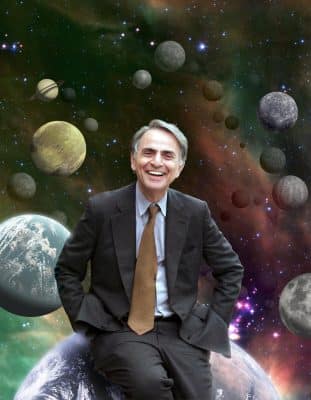From the October 2024 issue of Scientific American comes this story by Harvard University’s Naomi Oreskes: The Arctic Seed Vault Shows the Flawed Logic of Climate Adaptation. The subhead: “The difficulties of the Svalbard seed repository illustrate why we need to prevent climate disaster rather than plan for it.”
The subhead would make much more sense if written in the past tense: “The difficulties of the Svalbard seed repository illustrated why we needed to prevent climate disaster rather than plan for it.” After all, climate disaster is already here. As pointed out by the Advisory Group on Greenhouse Gases, the precursor to the designed-to-fail Intergovernmental Panel on Climate Change, 2 C above the 1750 baseline was “viewed as an upper limit beyond which the risks of grave damage to ecosystems, and of non-linear responses, are expected to increase rapidly.” Governments of the world agreed we passed the 2 C Rubicon in October 2023.
Again, back to my primary point: passing the 2 C Rubicon has been viewed as an abject disaster for a long time. And, we passed the 2 C Rubicon long ago. Even world governments agree that we are beyond 2 C, thus catching up with Andrew Y. Glikson in his 9 October 2020 book, The Event Horizon. The Chapter 5 Abstract of Glikson’s book, which you can easily find online, opens with this line: “During the Anthropocene greenhouse gas forcing has risen by more than 2.0 W/m2, equivalent to more than >2 C above pre-industrial temperatures, which constitutes an abrupt event over a period not much longer than a lifetime.” In other words, even people worried about the 2 C Rubicon forwarded by an economist—not a scientist—have had their worries met with reality. Two C is in the rearview mirror, as pointed out by a renowned scientist and governments of the world.
However, as I’ve pointed out many times in this space, 2 C never mattered. The precursor to the IPCC, the Advisory Group on Greenhouse Gases, pointed out in 1990 that 1 C would trigger self-reinforcing feedback loops. As reported many times in many places by climate science writer and speaker David Spratt, these self-reinforcing feedback loops were triggered at 0.5 C above the 1750 baseline.
Finally, I will point out yet again that the goal of adhering to numbers such as 2 C, 1.5 C, and 1 C was to avoid triggering self-reinforcing feedback loops. In yet another case of bad news, even the designed-to-fail IPCC has concluded that we triggered self-reinforcing feedback loops. The IPCC has concluded that we are amid the most abrupt event in planetary history and that an overheated ocean is responsible for the irreversibility of climate change. The IPCC reached this conclusion in its 24 September 2019 Special Report on the Ocean and Cryosphere in a Changing Climate.
Back to the story in Scientific American with which I began this video: Harvard Professor of History Naomi Oreskes begins with a couple of paragraphs focused on where and why the seed vault was created. In the third paragraph, she writes about the seed vault: “It is not specifically a response to the threat of climate change, but it is an epitome of climate-adaptation thinking. The logic behind it goes like this: Climate change is underway, and our political systems seem to be incapable of meaningful action to stop it, so we have little choice but to plan for a future when we will face serious climate disruption.
Chief among the disturbances will be disruptions to the food supply as punishing droughts and heat waves lead to widespread seasonal crop failures and important individual food species become impossible to grow in the places where people are used to growing them. When that happens, a supply of diverse seeds—including some adapted to hotter, harsher climates—may be just the thing we need to protect our food systems and stave off disaster.
It’s good to be realistic about the climate future we are facing, but the seed vault embeds a conceit common to many adaptation plans: we know what we are facing, so if we plan well, things will go well. But already chinks in the vault’s armor have appeared. In 2017 the vault suffered a flood caused, ironically, by climate change. A very warm (but increasingly not exceptional) winter combined with heavy spring rain to thaw part of the surrounding permafrost, flooding the entrance and threatening the safety of the seeds. Changes have been made to the vault’s entrance to lessen this particular risk, but the breach—less than a decade after the vault opened—shows that we humans are not very good at anticipating change, even in the short run.”
The final six paragraphs of the story in Scientific American provide a compelling overview of the current situation and a warning about the seed vault: “You don’t have to be a climate scientist to know the Arctic is losing permafrost; in Svalbard, the dislocation is obvious even to an untrained eye. And it’s long been known that the Arctic would warm more rapidly than the rest of the globe: Princeton University geophysicist Syukuro Manabe predicted this effect—known as polar amplification—in the 1970s (he belatedly won a Nobel Prize in 2021 for this work). Today the Arctic is warming four times faster than the rest of the planet. Even if the entire world were to stop burning fossil fuels now, global temperatures would not return to normal for decades or centuries to come. Given the state of action (or inaction) on climate, we don’t have to ask whether Arctic warming and permafrost loss will escalate. It is a near certainty.
That is not the only problem with the thinking behind the seed vault. Proponents describe it as a ‘safeguard against catastrophic starvation,’ but there are reasons to doubt it would function that way. Scholars at the University of British Columbia noted that seeds isolated from the environment do not evolve, so if they are reintroduced decades from now, they may face a natural world to which they are no longer adapted. Because of this biological lag, Svalbard’s diligently protected seeds might turn out to be useless, unable to grow or survive.
The vault’s focus on seeds also neglects crucially important food crops such as cassava that are not typically propagated through seeds. And if we truly were threatened by global starvation, how likely is it that the seeds could be retrieved, distributed and sown and the crops reaped in time to feed the world?
The problem of biological lag could be addressed by regular updating of the stored seeds with new samples taken from nature, but that is expensive. Even without such updating, the expense of the vault—it cost €8.3 million to build, €20 million to upgrade and €1 million a year to maintain—makes one wonder if it is really a good use of conservation resources and scientific effort. And then there is its carbon footprint. Maintaining the vault at its chilly –0.4 degree F requires electricity from the public power plant in Longyearbyen, which runs on fossil fuel. [-0.4 F is -18 C]
It’s smart to plan for the future. But the seed vault assumes that we know enough to plan effectively and that people will pay attention to what we know. History shows this is often not the case.
The difficulties of the seed vault remind us that the most important thing we can do right now is not to plan to respond to climate disaster after it happens but to do everything in our power to prevent it while we still have that chance.”
Author
"Dr. Guy McPherson is an internationally recognized speaker, award-winning scientist, and the world’s leading authority on abrupt climate change leading to near-term human extinction. He is professor emeritus at the University of Arizona, where he taught and conducted research for twenty years. His published works include 14 books and hundreds of scholarly articles. Dr. McPherson has been featured on TV and radio and in several documentary films. He is a blogger, cultural critic, and co-host of his own radio show “Nature Bats Last.” Dr. McPherson speaks to general audiences across the globe, and to scientists, students, educators, and not-for-profit and business leaders who seek their best available options when confronting Earth’s cataclysmic changes." source
Latest Peer-Reviewed Journal Article:
McPherson, Guy R., Beril Sirmack, and Ricardo Vinuesa. March 2022. Environmental thresholds for mass-extinction events. Results in Engineering (2022), doi: https://doi.org/10.1016/j.rineng.2022.100342.





